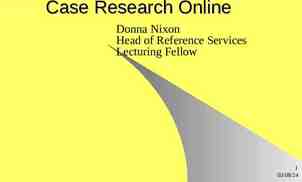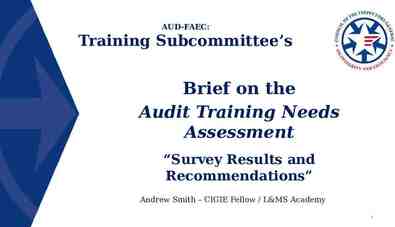The French Revolution
17 Slides832.50 KB
The French Revolution
The Old Regime (Ancient Regime) Old Regime – socio-political system which existed in most of Europe during the 18th century Countries were ruled by absolutism – the monarch had absolute control over the government Classes of people – privileged and unprivileged – Unprivileged people – paid taxes and treated badly – Privileged people – did not pay taxes and treated well
Society under the Old Regime In France, people were divided into three estates – First Estate High-ranking members of the Church Privileged class – Second Estate Nobility Privileged class – Third Estate Everyone else – from peasants in the countryside to wealthy bourgeoisie merchants in the cities Unprivileged class
Government under the Old Regime: The Divine Right of Kings Monarch ruled by divine right – God put the world in motion – God put some people in positions of power – Power is given by God – No one can question God – No one can question someone put in power by God – Questioning the monarchy was blasphemy because it meant questioning God
What the King Did
Economic Conditions under the Old Regime France’s economy was based primarily on agriculture Peasant farmers of France bore the burden of taxation Poor harvests meant that peasants had trouble paying their regular taxes – Certainly could not afford to have their taxes raised Bourgeoisie often managed to gather wealth – But were upset that they paid taxes while nobles did not
France Is Bankrupt The king (Louis XVI) lavished money on himself and residences like Versailles Queen Marie Antoinette was seen as a wasteful spender Government found its funds depleted as a result of wars – Including the funding of the American Revolution Deficit spending – a government spending more money than it takes in from tax revenues Privileged classes would not submit to being taxed
Philosophy of the French Revolution: The Enlightenment (Age of Reason) Scientists during the Renaissance had discovered laws that govern the natural world Intellectuals – philosophes – began to ask if natural laws might also apply to human beings – Particularly to human institutions such as governments – Philosophes were secular in thinking – they used reason and logic, rather than faith, religion, and superstition, to answer important questions – Used reason and logic to determine how governments are formed Tried to figure out what logical, rational principles work to tie people to their governments – Questioned the divine right of kings
Long-term Causes of the French Revolution
Short-term Causes of the French Revolution
Tennis Court Oath
National Assembly (17891791) Louis XVI did not actually want a written constitution When news of his plan to use military force against the National Assembly reached Paris on July 14, 1789, people stormed the Bastille
Uprising in Paris
Goodbye, Versailles! Adieu, Versailles! Parisian Commune feared that Louis XVI would have foreign troops invade France to put down the rebellion – Louis XVI’s wife, Marie Antoinette, was the sister of the Austrian emperor A group of women attacked Versailles on October 5, 1789 – Forced royal family to relocate to Paris along with National Assembly – Royal family spent next several years in the Tuileries Palace as virtual prisoners
Abolishment of the Monarchy The Convention abolished the monarchy – As long as the royal family lived, the monarchy could be restored – Put the royal couple on trial for treason Convictions were a foregone conclusion – Louis XVI was guillotined on January 21, 1793 – Marie Antoinette was guillotined on October 16, 1793 – Daughter Marie-Thérèse was allowed to go to Vienna in 1795 She could not become queen because of Salic law, which did not allow females to succeed to the throne – Son Louis-Charles, a.k.a. Louis XVII (lived 1785-1795) was beaten and mistreated until he died in prison
Reign of Terror: September 5, 1793-July 27, 1794 Despite military successes, the Convention continued to face problems domestically Danton and his Jacobin political party came to dominate French politics Committee of Public Safety – Headed by Danton (and later Robespierre) – Those accused of treason were tried by the Committee’s Revolutionary Tribunal – Approximately 15,000 people died on the guillotine Guillotine became known as the “National Razor” Including innovative thinkers like Olympe de Gouges and Madame Jeanne Roland
End of the Reign of Terror Members of the Girondist political party tried to end the Reign of Terror initiated by the Jacobin political party – This opposition to the Committee of Public Safety caused many Girondists to be tried and executed for treason Eventually, even Georges Danton wanted to end the executions – This resulted in Danton being tried and executed for treason Maximilien Robespierre became leader of the Committee of Public Safety – He continued the executions – Convention came to blame Robespierre for the Reign of Terror Thermidorean Reaction – July 27, 1794 – ended the Reign of Terror – Convention sent Robespierre and other members of the Committee of Public Safety to the guillotine Robespierre was guillotined on July 28, 1794






















